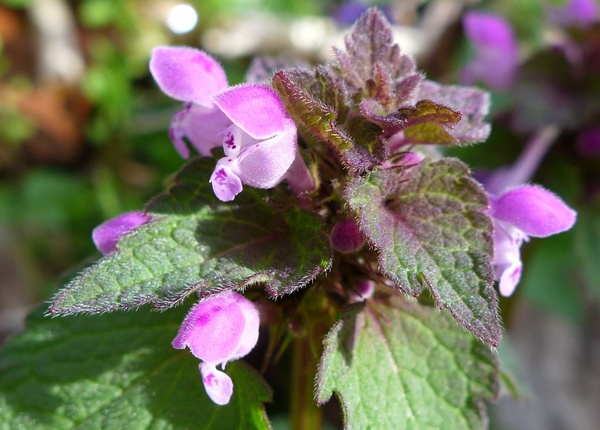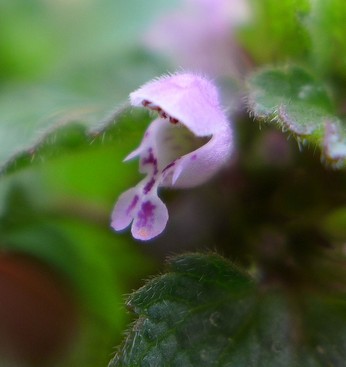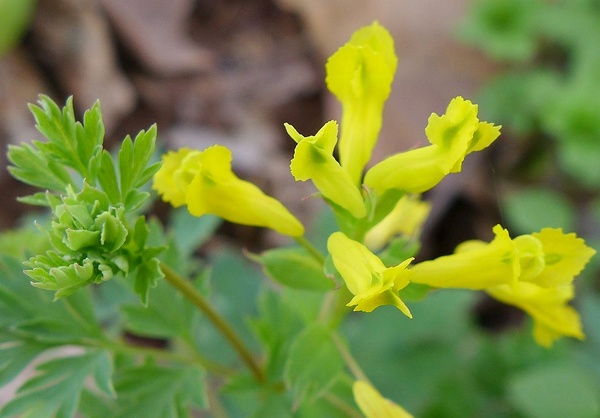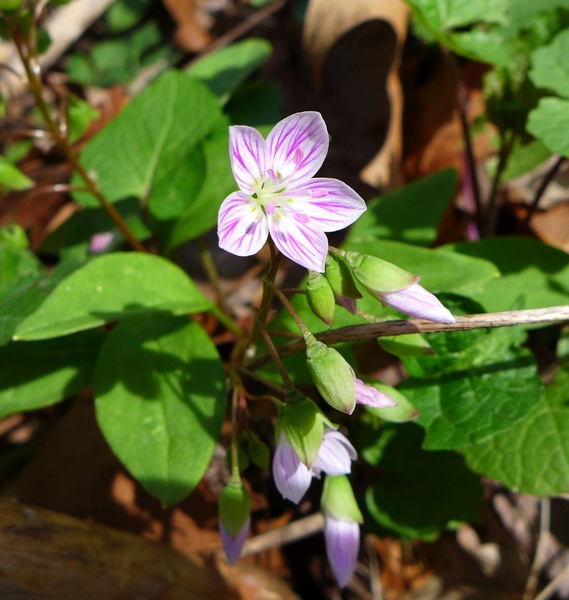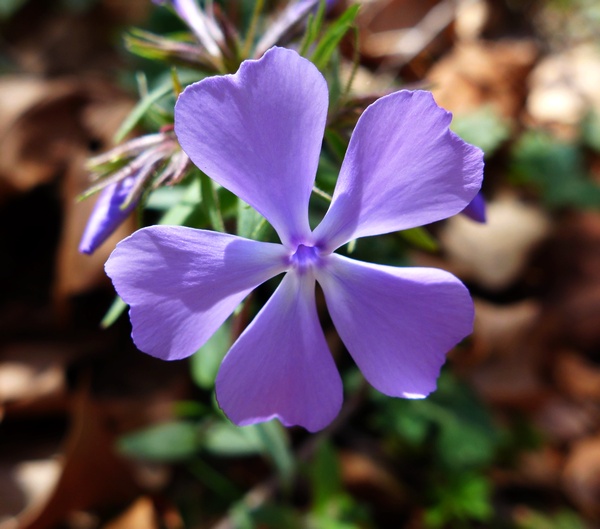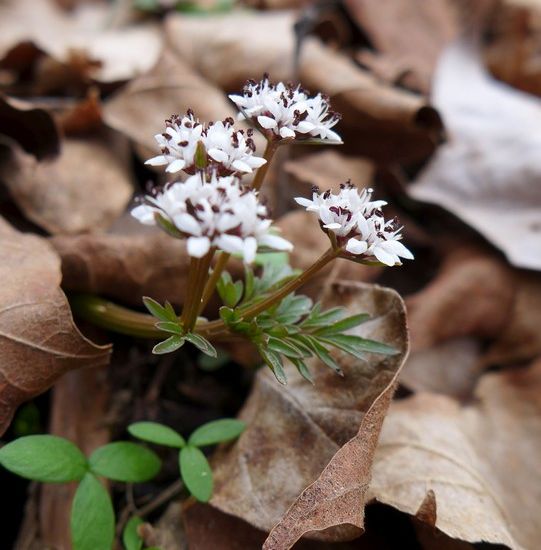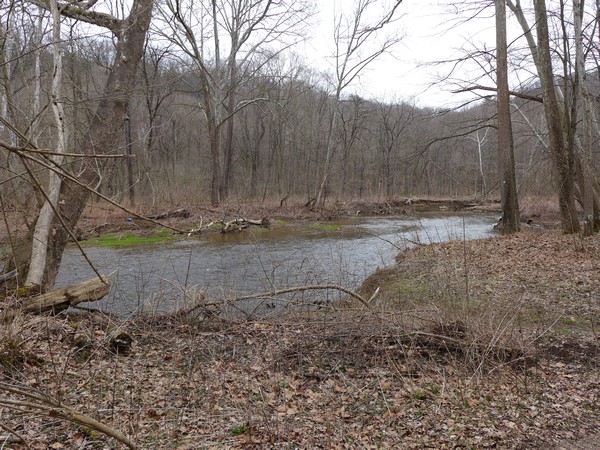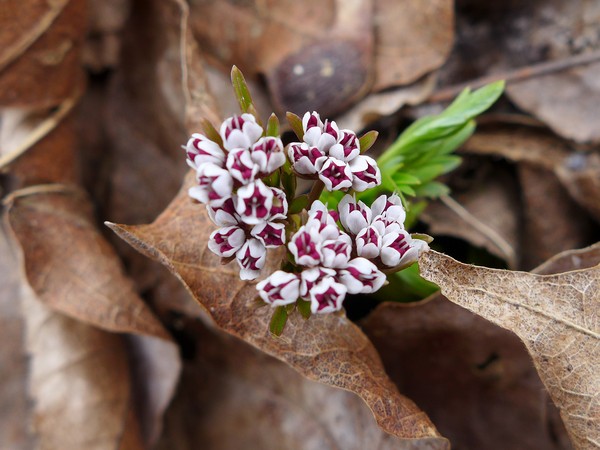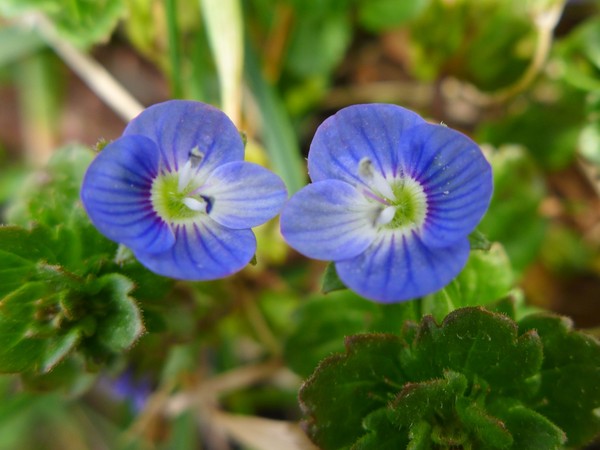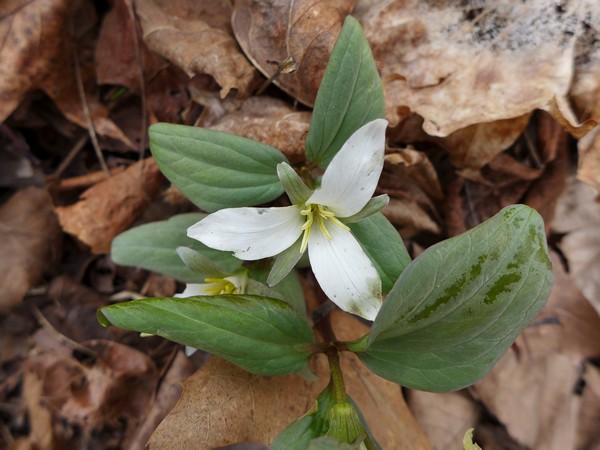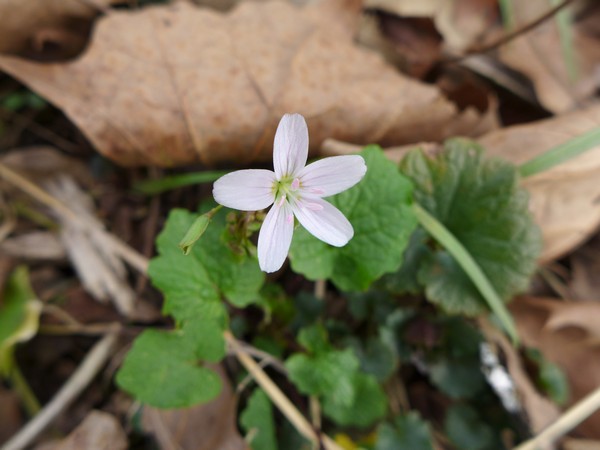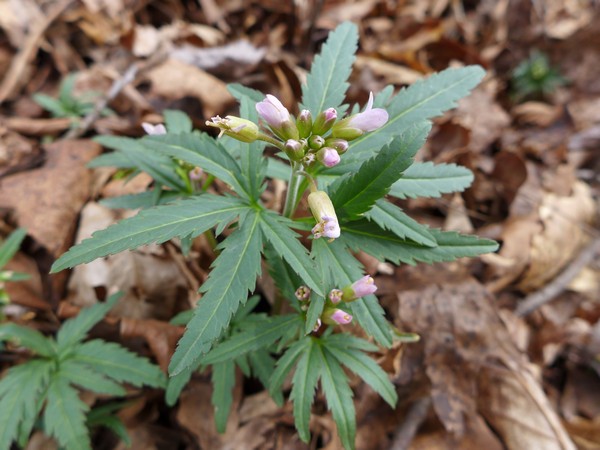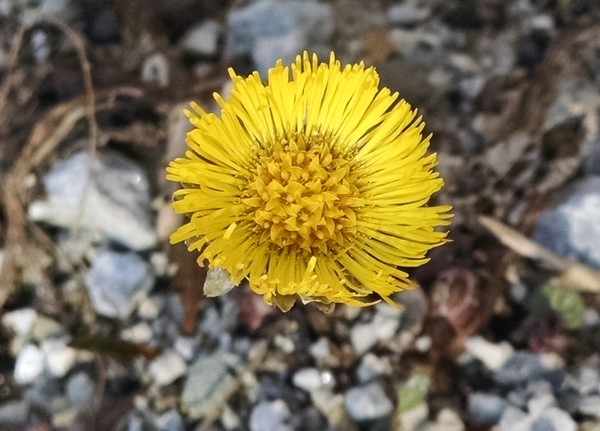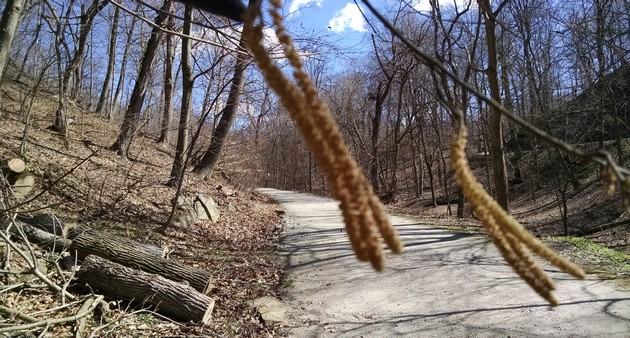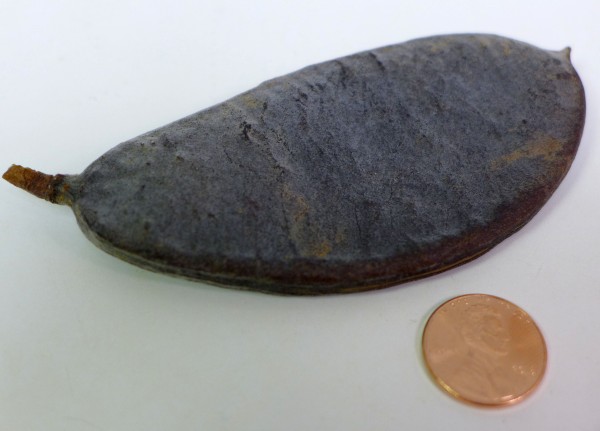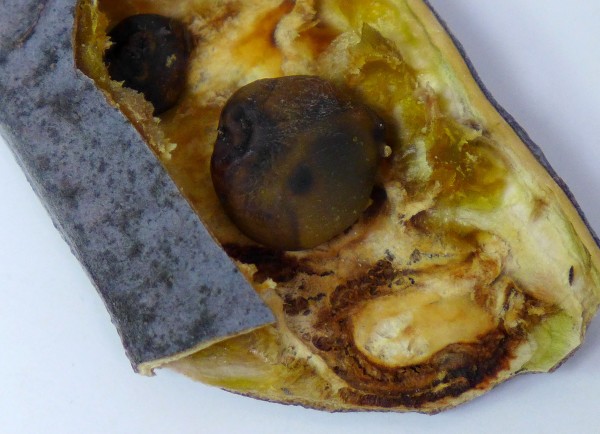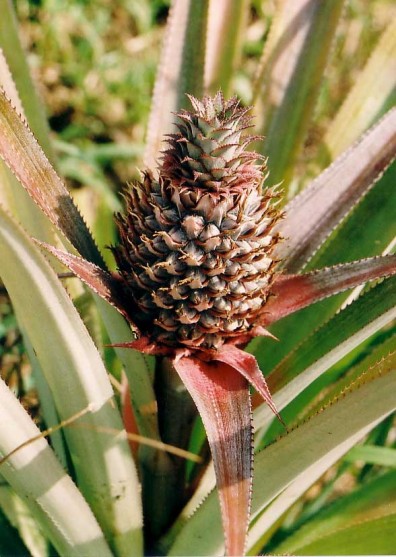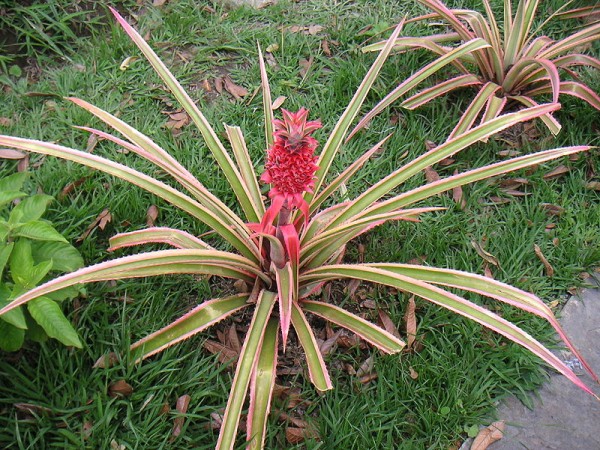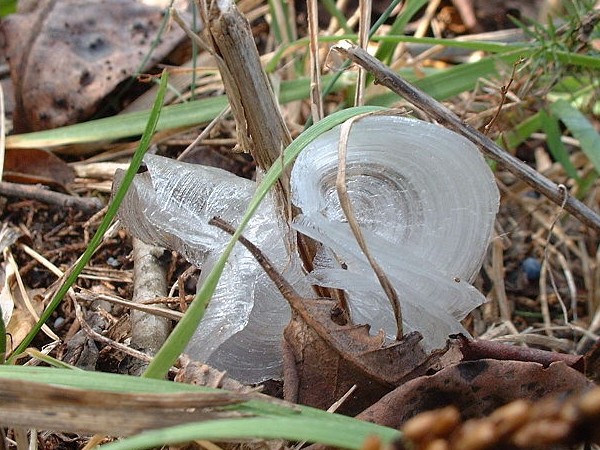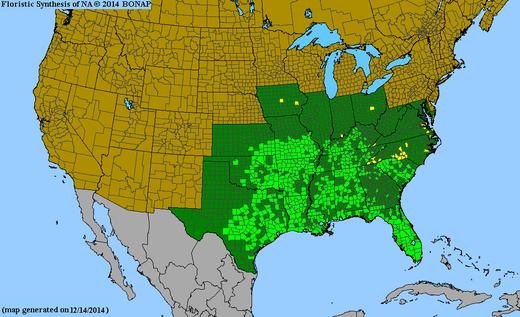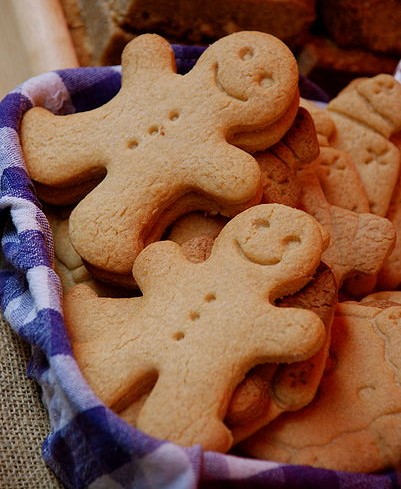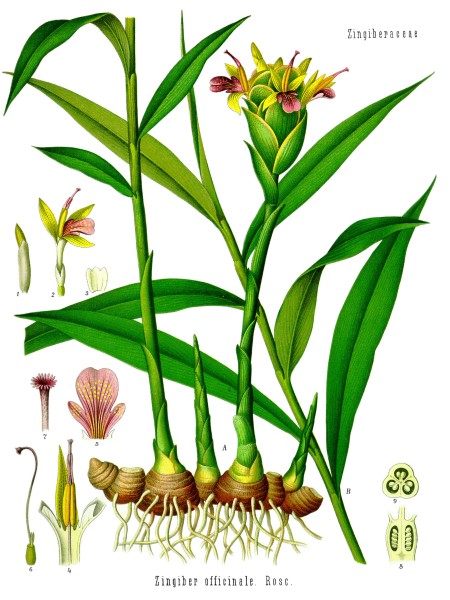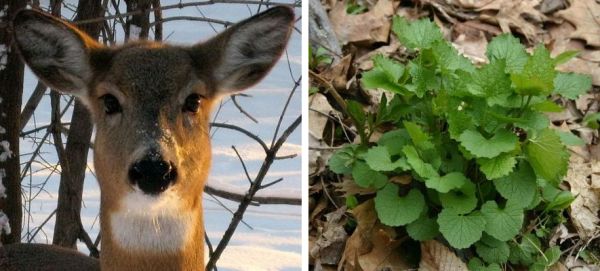
Late last month a group of us found corn salad at Enlow Fork (SGL 302) in Greene County, Pennsylvania. Which one did we see? The plant on the left, not the food on the right.
Ah, but the plant is food.
Corn salad (Valerianella locusta) is an edible annual, native to Europe, with a mild nutty flavor. Its smooth-edged leaves form a basal rosette, then opposite pairs on the stem topped by tiny, white, tubular flowers.

Centuries ago corn salad graduated from a forage plant to cultivation, perhaps in France where it is grown primarily near Nantes today.
According to Wikipedia, it spread through the rest of Europe — and eventually here — after King Louis XIV’s gardener promoted it. Along the way it acquired a lot of other names including mâche and rapunzel. Corn salad wasn’t named for the maiden with long hair. The fairy tale Rapunzel was named for the plant.
Missouri Botanical Garden describes how to harvest it: Before it flowers, pick the rosette. After it flowers harvest the entire plant.
We didn’t eat it, though. It’s too pretty.
(Side by side photos from Wikimedia Commons: Valerianella locusta and corn+black bean salad. Flower closeup by Kate St.John)
